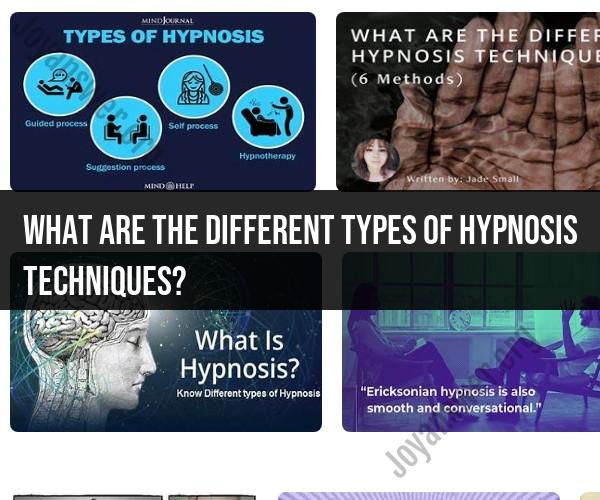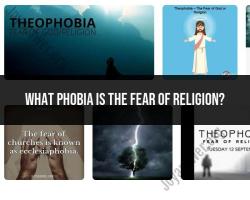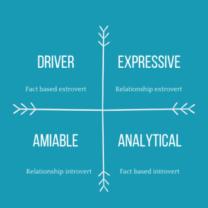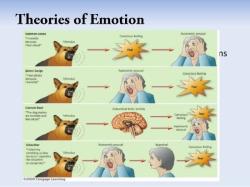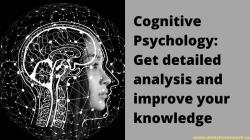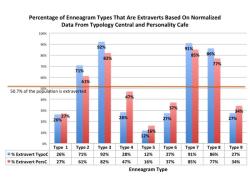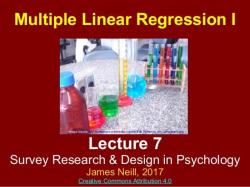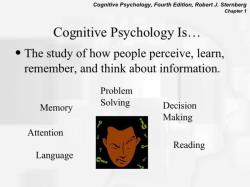What are the different types of hypnosis techniques?
Hypnosis is a state of focused attention, heightened suggestibility, and deep relaxation. There are various techniques and methods for inducing and utilizing hypnosis, and they are often tailored to the specific goals and needs of the individual. Here are some different types of hypnosis techniques:
Traditional Hypnosis: Traditional or "classical" hypnosis involves guiding the individual into a deep state of relaxation and suggestibility through verbal and non-verbal techniques. The hypnotist may use relaxation scripts, soothing language, and imagery to induce a trance state.
Ericksonian Hypnosis: Named after the famous psychiatrist and hypnotherapist Milton H. Erickson, this approach is more subtle and utilizes indirect suggestions. It often involves the use of metaphor, storytelling, and language patterns to bypass the conscious mind and influence the subconscious.
Neuro-Linguistic Programming (NLP): NLP is a psychological approach that incorporates hypnosis techniques to help individuals change thought patterns and behaviors. It focuses on language, perception, and communication to achieve specific goals.
Self-Hypnosis: Self-hypnosis involves individuals inducing a hypnotic state in themselves without the assistance of a hypnotist. This can be done through the use of recorded scripts, relaxation techniques, or mental imagery.
Instant or Rapid Induction: These techniques are used to quickly induce a hypnotic state. Methods may include a sudden hand clap, a quick relaxation command, or a shock induction that surprises the subject.
Regression Hypnosis: Regression involves guiding an individual back in time to explore past memories or experiences, including those from childhood or earlier in life. This can be used for therapeutic purposes, such as uncovering repressed memories or resolving emotional issues.
Analytical Hypnotherapy: This technique involves using hypnosis to explore and address underlying emotional or psychological issues, such as fears, phobias, or traumatic experiences. It aims to provide insight and resolution.
Hypnotherapy for Pain Management: Hypnosis can be used to alleviate physical and psychological pain. Techniques often include relaxation, imagery, and suggestions for pain relief.
Medical Hypnosis: Hypnosis is used in medical settings to complement traditional medical treatments. It can help manage symptoms, reduce stress, and improve overall well-being for individuals with various medical conditions.
Sports Hypnosis: Athletes use hypnosis to improve focus, concentration, and performance. It can also be used to reduce anxiety and boost confidence.
Hypnosis for Weight Loss and Smoking Cessation: Hypnotherapy is sometimes used to address weight management and smoking cessation by altering subconscious thought patterns related to these habits.
Stage Hypnosis: Performed for entertainment, stage hypnosis involves hypnotizing volunteers from the audience to engage in amusing or dramatic activities.
Hypnosis for Relaxation and Stress Reduction: Hypnosis is often used as a relaxation technique to reduce stress and promote mental and emotional well-being.
Recreational Hypnosis: Some individuals use hypnosis for recreational purposes, such as experiencing altered states of consciousness or exploring creative imagination.
It's important to note that hypnosis techniques should be conducted by qualified and trained professionals, especially when used for therapeutic or medical purposes. While hypnosis can be a valuable tool for personal development and well-being, it should always be applied with care and ethical considerations.
Exploring Different Hypnosis Techniques
There are many different hypnosis techniques, each with its own unique approach. Some of the most common techniques include:
- Hypnotherapy: Hypnotherapy is a form of psychotherapy that uses hypnosis to help people achieve specific goals, such as overcoming anxiety, depression, or quitting smoking.
- Suggestion: Suggestion is a technique that involves using hypnosis to plant positive thoughts and ideas in the subconscious mind.
- Visualization: Visualization is a technique that involves using hypnosis to help people create mental images of themselves achieving their goals.
Hypnotherapy, Suggestion, and Visualization Techniques
Hypnotherapy, suggestion, and visualization are all hypnosis techniques that can be used to achieve a variety of goals.
Hypnotherapy is often used to treat mental health conditions, such as anxiety, depression, and post-traumatic stress disorder (PTSD). It can also be used to help people overcome bad habits, such as smoking or overeating.
Suggestion is a powerful technique that can be used to help people change their thoughts, feelings, and behaviors. For example, suggestion can be used to help people reduce stress, improve their sleep, or boost their self-esteem.
Visualization is a technique that can be used to help people achieve their goals in all areas of life. For example, visualization can be used to help people improve their academic performance, athletic performance, or professional success.
Cognitive-Behavioral and Ericksonian Hypnosis Approaches
Cognitive-behavioral hypnosis (CBT hypnosis) and Ericksonian hypnosis are two specific approaches to hypnosis.
CBT hypnosis is a type of hypnotherapy that combines the principles of cognitive-behavioral therapy (CBT) with hypnosis. CBT is a type of therapy that focuses on changing unhelpful thoughts and behaviors. CBT hypnosis can be used to treat a variety of mental health conditions, such as anxiety, depression, and eating disorders.
Ericksonian hypnosis is a type of hypnotherapy that is named after its founder, Milton H. Erickson. Ericksonian hypnosis is a more indirect and gentle approach to hypnosis than other methods. It is often used to help people with sensitive issues, such as trauma or grief.
The Power of Self-Hypnosis for Personal Growth
Self-hypnosis is a technique that involves hypnosis yourself. It is a powerful tool for personal growth and development. Self-hypnosis can be used to achieve a variety of goals, such as:
- Reducing stress and anxiety
- Improving sleep
- Boosting self-esteem
- Increasing motivation
- Achieving personal goals
Ethical Considerations and Safety in Hypnosis Practices
It is important to note that hypnosis is not a magic bullet. It is not a cure-all for all problems. Hypnosis should only be used by trained and qualified professionals.
There are a few ethical considerations that should be kept in mind when using hypnosis. First, it is important to obtain the client's informed consent before using hypnosis. Second, the hypnotist should never violate the client's trust or exploit them in any way. Finally, the hypnotist should always act in the best interests of the client.
Hypnosis is generally safe when used by a qualified professional. However, there are a few potential risks associated with hypnosis, such as:
- False memories: Hypnosis can sometimes lead to the creation of false memories.
- Dissociation: Hypnosis can sometimes lead to dissociation, which is a feeling of being detached from your body or surroundings.
- Suggestion: It is important to note that hypnosis can be used to suggest both positive and negative thoughts and behaviors. It is important to choose a hypnotist who is ethical and reputable.
If you are considering using hypnosis, be sure to do your research and choose a qualified professional.
